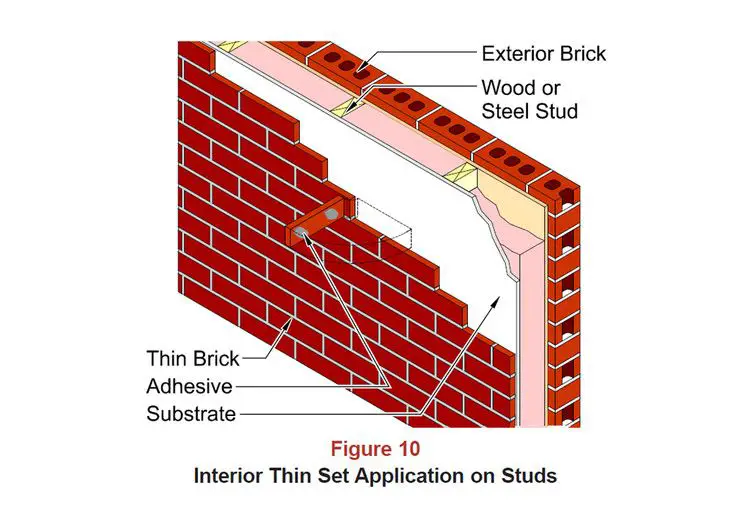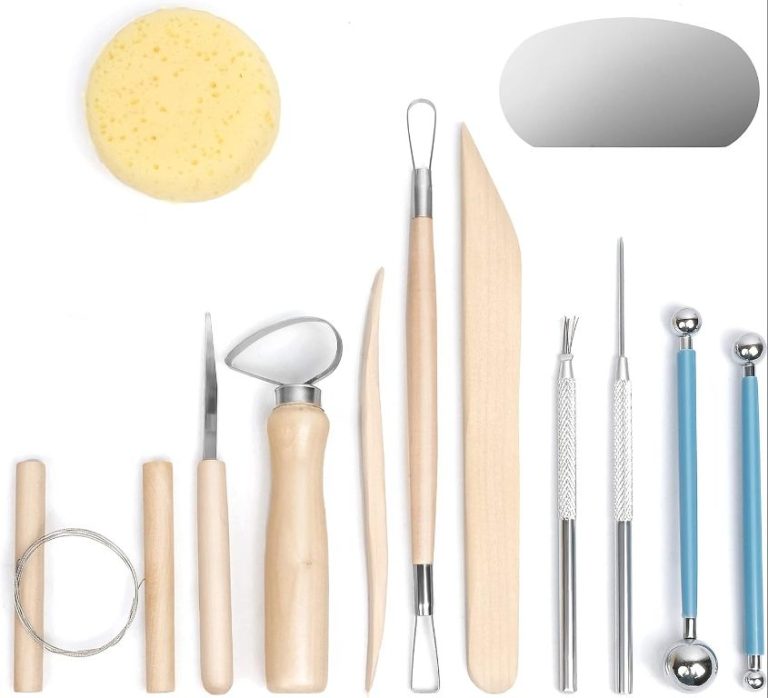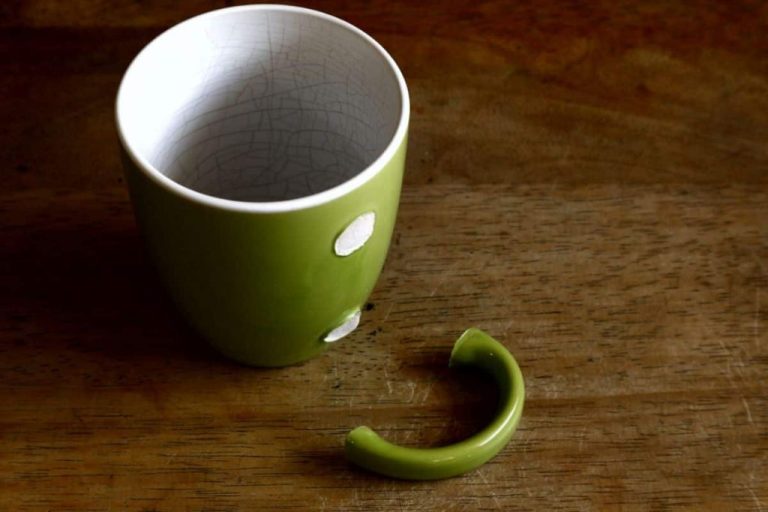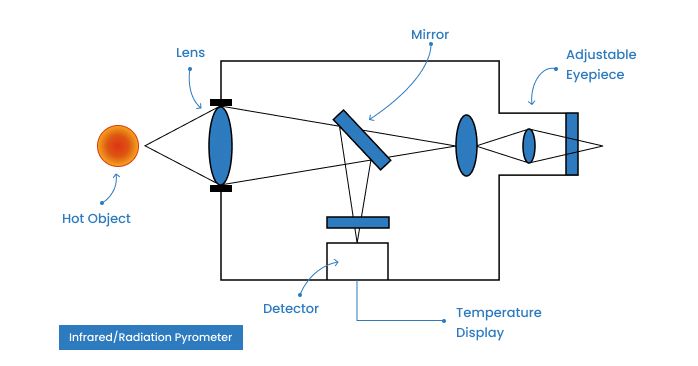What Glue Can Be Used For Air Dry Clay?
Air dry clay, also known as modeling clay, is a lightweight, non-hardening modeling material made of cellulose compounds combined with plaster or clay. Unlike traditional clay that requires firing in a kiln, air dry clay hardens naturally through evaporation. It is a popular choice for artists, hobbyists, and kids due to its versatility, low cost, and non-toxic composition.
Air dry clay can be used to create a wide variety of arts and crafts projects. It is commonly used to make jewelry, figurines, dolls, decorative pieces for the home, as well as kids’ crafts and school projects. With proper sealing, air dry clay creations can even be used outdoors.
When making projects with air dry clay, it is often necessary to join separate pieces together to form the complete model. Selecting the right adhesive is an important step, as the wrong glue can result in weak bonds that cause the project to fall apart. This article will provide an in-depth look at the best glue options for air dry clay.
Types of Air Dry Clay
There are several main types of air dry clay, each with their own ingredients, properties, and ideal uses:
Clay – Made from natural clays like terra cotta. Air dries to a natural, matte finish. Best for items that don’t need to be lightweight or delicate.
Paper Clay – Made from clay and cellulose fiber like paper pulp or sawdust. Lighter and less prone to cracking than clay. Good for intricate shapes. Air dries to a matte, papery finish.
Cornstarch Clay – Made from cornstarch thickened with glue and occasionally salt or cream of tartar. Very lightweight and smooth. Best for detailed sculptures that need to be sturdy but lightweight after drying.
Cold Porcelain – Made from glue and cornstarch or sometimes paper pulp. Has a smooth, porcelain-like finish after drying. Best for delicate, detailed pieces like jewelry or figurines. Sturdier than typical cornstarch clay.
Factors in Choosing Glue
When selecting an adhesive for air dry clay projects, there are several key factors to consider:
Drying Time – The glue should dry at a similar rate to the clay so there are no weak points. Fast-drying glues work best for impatient crafters.
Bond Strength – The adhesive must form a strong bond between clay pieces so the finished project does not fall apart. Look for glues designed for ceramics/pottery.
Flexibility – If the project will bend or flex, choose a flexible glue that remains elastic after drying. Rigid, brittle glues are more likely to crack.
Food Safety – For clay food containers or baking molds, select a non-toxic, food-safe adhesive. Avoid anything containing solvents.
Acidity – Some glues can react with the clay chemistry. Low-acid adhesives are ideal as high acidity can weaken bonds over time.
Common Adhesives for Air Dry Clay
There are several types of glue that work well for bonding air dry clay. Some of the most popular options include:
White Glue
White glue, also known as school glue, is a versatile and easy-to-use adhesive for air dry clay. It creates a strong bond and dries clear. White glue is a good choice when you need extra working time to position pieces.
Wood Glue
Wood glue provides an extremely strong bond for air dry clay. It’s commonly used by crafters and is water-based. Wood glue dries transparent and won’t damage or discolor clay. It sets up faster than white glue.
Super Glue
Super glue generates an instant bond with air dry clay. It’s useful when you need to quickly attach small pieces or make repairs. Super glue should be handled carefully as it bonds skin instantly.
Epoxy
Two-part epoxy adhesives create an exceptionally durable bond with air dry clay. Epoxy is often used for large pieces or clay sculptures that require support. It takes longer to cure but makes a permanent bond.
Liquid Clay
Some air dry clays are sold with a complementary liquid clay adhesive. Using the specially formulated glue within the clay brand results in excellent adhesion. Liquid clay blends smoothly into projects.
Applying the Glue
When gluing air dry clay pieces together, it’s important to use the right amount of glue. Too little glue may not create a strong enough bond, while too much can make things messy and interfere with proper drying.
Start by putting a thin layer of glue on both surfaces you want to join. Spread the glue evenly using a popsicle stick, paintbrush, or your finger. The layer should be thin but completely coat each surface.
Press the clay pieces together firmly and hold for 30 seconds or more to let the initial bond form. Some clays are porous, so you may need to wait 1-2 minutes before moving the piece so the glue can start soaking in.
Use clamps or rubber bands to tightly secure complex or heavy projects while the glue dries. This helps strengthen the bond by keeping surfaces tightly compressed. Leave clamps on for at least an hour or until the glue has had time to fully dry.
Glue drying time depends on the type used. White glues take 24 hours to fully cure. Super glues set fast, in just 5-60 seconds. Epoxy glues take several hours to bond and 24 hours to fully harden.
Be patient and allow adequate drying time for strongest results. Glued clay pieces can be fragile until the adhesive has completely set.
Tips for Strong Bonds
When gluing air dry clay, there are some simple techniques you can use to help create an incredibly strong bond between pieces:
Roughen the Surfaces
Before applying any adhesive, be sure to rough up the surfaces that will be joined. You can do this by lightly scoring them with a knife or sandpaper. This helps the glue grab onto the clay better.
Use Liquid Clay
Applying a thin layer of liquid clay to the areas being joined acts like a primer for the glue. It fills in any crevices and gives the adhesive something to grip onto, creating a super tight bond.
Reinforce with Wire
For joining large clay pieces or parts that will undergo stress, add some structure by embedding thin wire into the adhesive. The wire acts like rebar reinforcement in cement, adding exceptional strength to the seam.
Food-Safe Options
When working with air dry clay for kitchenware or children’s toys that go in the mouth, it’s important to use an adhesive that is non-toxic and food-safe. The FDA (Food and Drug Administration) regulates adhesives and provides guidelines on food-safe options.
Some excellent food-safe adhesives for air dry clay projects include:
- Elmer’s Glue or other PVA (polyvinyl acetate) white glues
- Liquid starch such as farina or cornstarch mixed with water to make a paste
- Citrus juice like lemon or orange
- Food-grade shellac
In addition to food-safe adhesives, it’s a good idea to seal air dry clay kitchenware and toys with a non-toxic acrylic sealer, varnish or glaze formulated to be food-safe. This creates a protective barrier and prevents bacteria from growing in crevices. Be sure to check that any sealer or glaze is marked as food-safe and non-toxic when dry.
Following FDA guidelines for adhesives and sealers will ensure your air dry clay projects are safe for food use and for children to put in their mouths.
Storing Glued Projects
After you finish gluing your air dry clay sculpture, you’ll need to give it sufficient time to fully cure and harden before putting it into storage. Air dry clay hardens as the water evaporates, so thicker areas and enclosed spaces may take longer. Make sure all the clay feels uniformly solid and dry before storing.
Ideal conditions for storage are consistent room temperature around 70°F and low humidity around 30-50% relative humidity. Avoid swings in temperature and humidity which can cause clay to expand or contract and potentially weaken glued joints. Don’t store projects anywhere damp or moist.
Once fully cured, gently wrap or box your clay sculptures before putting into storage to prevent dust buildup. Avoid materials that could stain the clay. Periodically check for any new cracks or weak points in glued joints, especially if storing for long periods.
Troubleshooting Weak Bonds
If two pieces of air dry clay won’t hold together or come apart after drying, don’t panic. There are a few methods to restrengthen and reglue them.
First, consider if there are enough contact points between the two pieces. Flat smooth areas without much texture can be tricky to fuse. Try roughing up the surfaces with a stylus or sculpting tool before reapplying the adhesive.
Next, ensure the pieces are pressed together tightly as the glue dries. Using clamps, rubber bands, or weights can help. Apply gentle, even pressure and resist the urge to wiggle or adjust them as they set.
It’s also wise to add subtle clay supports like armatures or rods between large connected pieces for stability. Consider where stress points may form ahead of time.
Finally, reapply a thin layer of glue to all edges and contact points. Let dry fully. Water down white or tacky glue slightly as thicker versions can create lumps. Be patient and allow extensive drying time for maximum strength.
With care and proper technique, you can salvage and re-fuse tricky air dry clay components. Just remember to reinforce structures for longevity and avoid moving pieces before they cure.
Final Advice
When gluing air dry clay, it’s important to experiment with different adhesives to find what works best for your particular project and type of clay. Follow the manufacturer’s instructions closely, as the drying times and application methods can vary widely between glue brands. Test the bonds on scrap pieces of clay before committing to a glue for the final project.
Some clays and glues form stronger bonds than others. Don’t be afraid to try a few options to discover which combination results in a durable, long-lasting bond. Pay attention to dry times as well, as some adhesives set up faster or slower. Finding the right glue can take some trial and error, but the effort is worth it for a sturdy finished piece.
Lastly, remember that following the instructions is key. Use the recommended application techniques and drying times specific to each adhesive. Rushing the process or improperly applying the glue can easily result in a weak bond. With some experimentation and care taken during the gluing process, you’ll be able to create lasting and creative projects with air dry clay.





